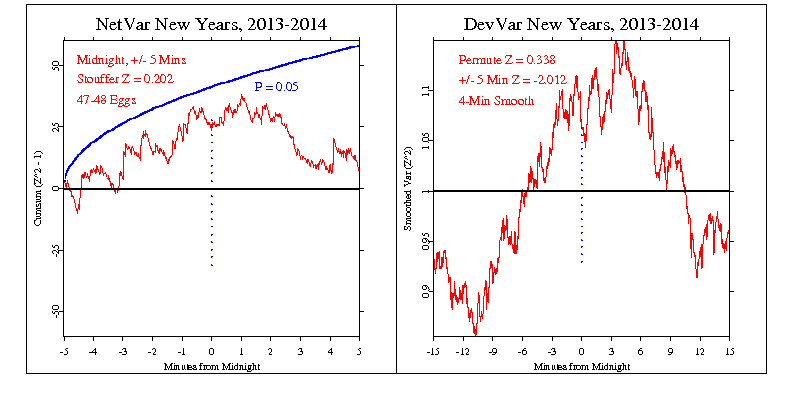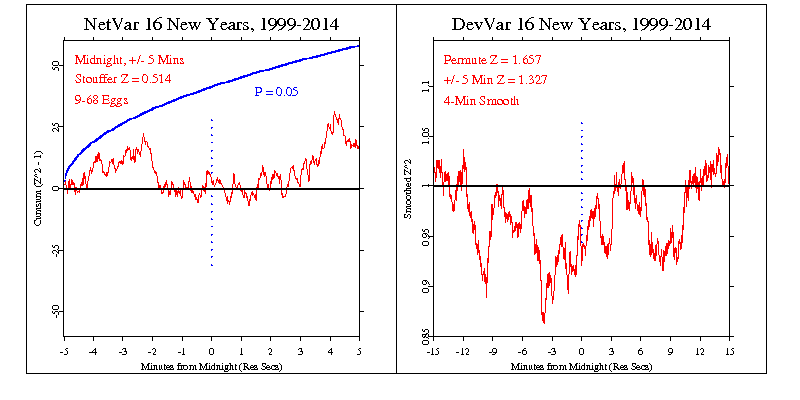New Year 2013–2014
Standard analysis
This year again we use the longstanding predictions of a meanshift (squared Stouffer Z) during 10 minutes surrounding midnight, and a variance decrease with a minimum at midnight. These two measures have been assessed for each New Year since 1998-1999, a total of 16 years.
The probability for the squared Stouffer Z for this year is not significant at p=0.420 with Z=0.202
For the Variance decrease, a comparison with the distribution of 10000 permutations of the data indicates a modest probability of 0.368 and Z=0.338, in accord with the prediction. A simpler calculation of the variance deviation during the 10-minute period surrounding midnight yields a stronbly contrasting Z of -2.012.

In addition to the two figures above representing the results for the current year, a composite over the 16 years is shown for the two measures. The meanshift is slightly positive, with p = 0.304 and Z = 0.5142 But the variance decrease prediction calculated by permutation analysis is more strongly supported with a p-value of 0.049 and Z=1.657. A simpler calculation addresses the implicit prediction that the variance will be low around midnight. If we look at midnight +/- 5 minutes, the deviation is similar, with a somewhat smaller estimated Z-score of 1.327.

It is important to keep in mind that we have only a tiny statistical effect, so that it is always hard to distinguish signal from noise. This means that every success
might be largely driven by chance, and every null
might include a real signal overwhelmed by noise. In the long run, a real effect can be identified only by patiently accumulating replications of similar analyses.
